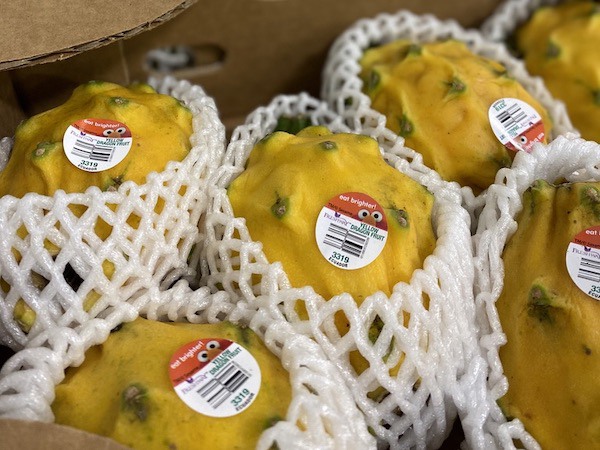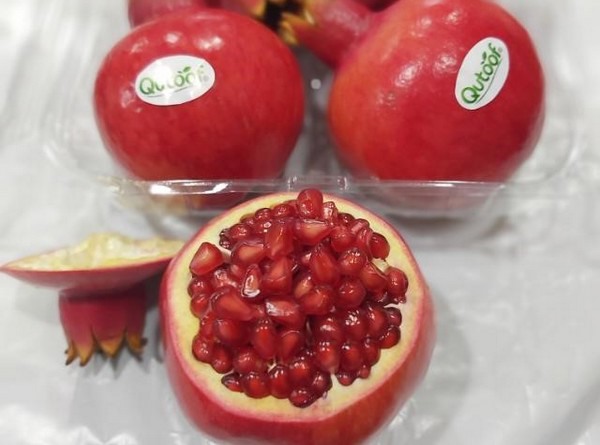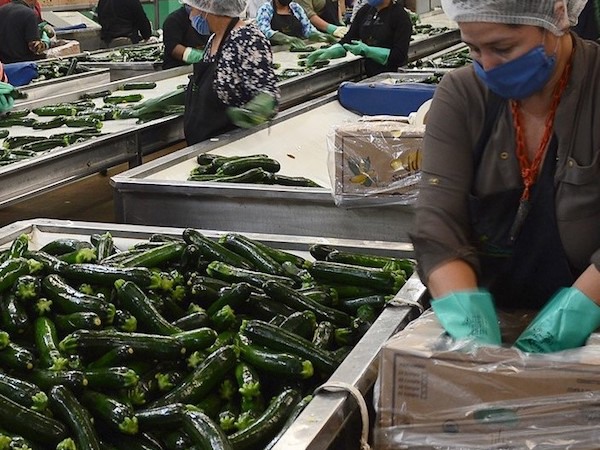In September, high citrus demand continued to be a dominant theme. In addition to this, the apple and pomegranate harvests were underway and made a big splash on the world market, and climate events such as droughts, wildfires and a volcanic eruption affected the produce industry.
Tropical and exotic produce in Latin America
The Brazilian guava season saw some challenges in September, with lower volumes being harvested to due weather issues and also logistical challenges due to the pandemic, since the guavas are exported by airfreight.
Ecuador’s mango season started in week 39 with the Ataulfo variety, and Tommy Atkins followed in week 40. The Spanish mango season started in September too, and the new Sensation variety was marketed throughout Europe this season.
Ecuador’s goldenberries were being rediverted from Europe, where demand was down due to the pandemic, to the US. Ecuador also prepared for the start of their yellow dragon fruit season.
After a tumultuous few months, the global garlic market began to stabilize in September. Ginger, on the other hand, continued to see extremely high demand, and exports out of Peru reached levels never before seen.

Freshway Produce's yellow dragon fruit.
High lemon volumes
The Turkish lemon season kicked off in September with the Meyer variety, a forecasted increase of volumes of 35% for the season and good demand. Meanwhile, Chile shipped their lemons to China for the first time this year, as the Chinese market was opened to Chile in May, and in September the volumes sent to China started to really ramp up.
In the US, however, September saw high volumes of lemons coming out of Mexico, which, combined with the volumes out of California and Chile at that time, caused an oversupply in the market, especially as the foodservice industry remained lower than usual. The overall sizing out of Mexico was on the small side, which did create a strong market for the larger sizes of lemons in the US. The European market for Mexican limes finally started to gain traction again, after a few very slow months, where demand was low due to the pandemic and the closure of foodservice establishments.

Citrus demand remained strong
The citrus category in general continued to see high demand in September, as the consumer focus on vitamin C packed foods remained strong. In Europe, the prices in September were very high and there was concern that a shortage of oranges would occur. In Valencia, La Unió de Llauradors found that some producers had started harvesting their Satsumas earlier than they should, which caused worry for meeting the quality standards and caused the organization to substantially increase the number of their inspections in warehouses and fields. The first Spanish mandarins of the season sold out quickly. Preparations for the Egyptian orange season were in full swing this month as high demand was expected.
The South African supplies of Valencia oranges went fast, and volumes were low at the start of September, which was much earlier than usual, due to the high demand combined with lower production volumes in some regions. The demand for the South African citrus this season was strong in both the traditional markets such as Europe and the UK, as well as in the growing US market. South Africa also gained access to the Philippine market for their citrus in September and the industry hopes to make a splash there in the 2021 season.
The Chilean clementine season concluded in September after seeing a 2.5% growth over the previous season; most of the volumes were absorbed by the US. In Australia, the citrus demand and pricing was also consistently strong.

Pomegranate season kicks off
September was an important month for the pomegranate production. In Elche, Spain, the demand and pricing for the pomegranates was high, due to an earlier end of the Mediterranean season. As the berry and stone fruit seasons wrapped up, the demand for the Spanish pomegranates increased. The Sichuan, China, pomegranate season started in late august and prices were on the rise as the Chinese Ghost Festival always brings high pomegranate demand. The Egyptian pomegranate season also kicked off in September, with a promising outlook for the Wonderful variety.

Apple harvests underway
During September, the US apple harvest was underway in full force. A strong windstorm and fires in the region did reduce the overall volumes and caused a few harvesting delays. The number of proprietary varieties on the US market has been increasing in recent years and the Juici variety, marketed by Starr Ranch Growers, saw a doubling of supplies this year. The pear harvest in the US also continued strongly in September and the demand for packaged pears was up.
The English apple season progressed nicely with good quality and above average sizing. In France, September saw the beginning of the harvest of the Blue Reine apple.

Climate events impact produce
September saw a few climate events that effected the produce industry. Wildfires in California damaged some crops grown in the regions near the fires, specifically due to ashes in the air falling down onto the crops. The air quality was the main concern, and some growers had to temporarily halt their harvests to protect their workers.
In Ecuador, a volcanic eruption caused issues for the banana industry and falling ashes damaged 10-15% of the banana production.
In Chile, avocado growers were being challenged by a drought. Despite this, the first Chilean avocados arrived in Australia in September.
Mexico in full production
The raspberry and blackberry production in Mexico slowly started back up this month too, and the market saw high prices for the blackberries. The South American blueberry season also slowly started back up in September, though the volumes started out lower than usual as maturation was slightly delayed.
The winter vegetable season in Mexico started on time with strong volumes of both conventional and organic product. September marked the start of the Veracruz pineapple season, which kicked off with low volumes and high prices.

Onion ban in India
In India, due to rising domestic prices, the government put a temporary ban on the export of onions. This caused a significant increase in demand in the normal export markets, which was good news for Egyptian exporters.
Company news
In company news in September, Mission Produce announced that they would be filing for IPO under the symbol “AVO”. Nature Fresh Farms launched a new 100% compostable cucumber wrap and Apeel teamed up with Houwling’s to release plastic-free cucumbers at select Walmart locations.

Nature Fresh Farms' compostable cucumber wrap.
